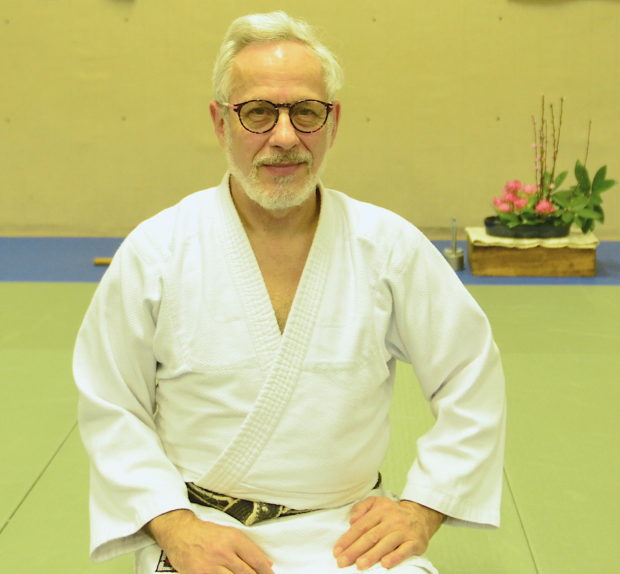
Sensei Michael Lebens 5th dan Ki-Aikido cheif instruktor shares his thoughts on his own journey of KI-Aikido.
When did you first hear about Ki-Aikido?
I was studying for my doctorate at the University of Warwick in Coventry. The year was 1978. I had practised Tae Kwon Do as an undergraduate and had been to a few practise sessions at the University dojo. It seems that word got around! I was supervising Microbiology practical classes when one of the undergraduate students came up to me and said ”I hear that you’re interested in martial arts.”
He persuaded me to go to a Ki Aikido practise at the University sports centre with a first dan intsructor who ran a club in Coventry and had started a group at the University. I thought the instructor was a bit strange, and he was definately suspicious of all these University people who thought they were so clever. He suggested that those who were really interested should turn up at his dojo in town.
I was one of the only ones who did. In my black karate suit with a fist and Korean script emblazoned on the back of the jacket and a fluorescent green belt, I did not make a good impression. I suppose that is why I spent the first three lessons doing aikitaiso (individual training) whilst everyone else was getting to practise techniques.
Things got better once I got rid of the black suit, and well Sensei Burgess is now seventh dan and I still call him Sensei!
What was it about the training that kept your interest?
It was different and very difficult to understand. You were told to relax completely and yet still be strong. No-one could really tell you how to do it and yet you could so clearly see the effects in people like Sensei Burgess. I remember trying to push him over or to lift his knee when he was sitting seiza, and believe me I was very fit and quite strong. I never really knew what I was doing, and passing the ki tests was a complete lottery. Rolling wasn’t a problem as we had practised rolling in Tae Kwon Do, but everything else was just a complete mystery…. and I don’t like mysteries. So I had to find out what lay behind the outward calm.
I suppose the first twenty five years were the worst. But I was stubborn.
How has your understanding of the art developed over the many years of your training?
This is a difficult question. Is it possible to perceive your own perception or understand your own understanding? At any point in my training I understood to the level that my training allowed. Clearly my understanding has changed and I am hopeful that it has developed over the years. I don’t really know whether my understanding has improved or whether it has just changed. In the beginning I was just trying to get the techniques to work. I wasn’t particular about how. I should be ashamed to say that, but it is true and I’m not ashamed because I am just the same as everyone else in that respect. When things changed for me was when I stopped trying to get things to work. I begun to realise that the old saying that the techniques are infallible and are subject merely to the imperfect efforts of the practitioner is simply not true. The aikidoka creates technique. Without him or her there would be no technique. Creation is an act that affects the future and you cannot create a good future by copying the past. This is why aikido is art.
Can anyone train Ki-Aikido?
Senseis reply.
You have a background in philosophy, does this have any influence on your approach to teaching Ki-Aikido?
Senseis reply.
Have questions for Sensei? Here’s where you can ask them, just add them to the list.